Voltcraft MS228 Handleiding
Voltcraft
Batterij-oplader
MS228
Bekijk gratis de handleiding van Voltcraft MS228 (4 pagina’s), behorend tot de categorie Batterij-oplader. Deze gids werd als nuttig beoordeeld door 71 mensen en kreeg gemiddeld 4.0 sterren uit 36 reviews. Heb je een vraag over Voltcraft MS228 of wil je andere gebruikers van dit product iets vragen? Stel een vraag
Pagina 1/4

BEDIENUNGSANLEITUNG
VERSION 08/15
MS-228 LCD-BATTERIETESTER
BEST.-NR.: 1367584
BESTIMMUNGSGEMÄSSE VERWENDUNG
Das Produkt eignet sich zum Prüfen des Ladezustandes von 1,5-V-Rund- und
1,5 (1,55)-V-Knopfzellen und von 9-V-Blockbatterien. Der Ladezustand kann anhand einer visuellen
Skala von der LCD-Anzeige abgelesen werden. Das Produkt eignet sich nicht zum Testen von
Akkus. Eine Verwendung ist nur in geschlossenen Räumen, also nicht im Freien erlaubt. Der
Kontakt mit Feuchtigkeit, z.B. im Badezimmer u.ä. ist unbedingt zu vermeiden.
Aus Sicherheits- und Zulassungsgründen (CE) dürfen Sie das Produkt nicht umbauen und/
oder verändern. Falls Sie das Produkt für andere Zwecke verwenden, als zuvor beschrieben,
kann das Produkt beschädigt werden. Außerdem kann eine unsachgemäße Verwendung
Gefahren wie zum Beispiel Kurzschluss, Brand, Stromschlag, etc. hervorrufen. Lesen Sie sich
die Bedienungsanleitung genau durch und bewahren Sie diese auf. Reichen Sie das Produkt nur
zusammen mit der Bedienungsanleitung an dritte Personen weiter.
Das Produkt entspricht den gesetzlichen, nationalen und europäischen Anforderungen. Alle
enthaltenen Firmennamen und Produktbezeichnungen sind Warenzeichen der jeweiligen Inhaber.
Alle Rechte vorbehalten.
LIEFERUMFANG
• LCD-Batterietester
• Bedienungsanleitung
SICHERHEITSHINWEISE
Lesen Sie sich die Bedienungsanleitung aufmerksam durch und beachten Sie
insbesondere die Sicherheitshinweise. Falls Sie die Sicherheitshinweise und die
Angaben zur sachgemäßen Handhabung in dieser Bedienungsanleitung nicht
befolgen, übernehmen wir für dadurch resultierende Personen-/Sachschäden keine
Haftung. Außerdem erlischt in solchen Fällen die Gewährleistung/Garantie.
a) Personen / Produkt
• Das Produkt ist kein Spielzeug. Halten Sie es von Kindern und Haustieren fern.
• Lassen Sie das Verpackungsmaterial nicht achtlos liegen. Dieses könnte für Kinder zu
einem gefährlichen Spielzeug werden.
• Schützen Sie das Produkt vor extremen Temperaturen, direktem Sonnenlicht, starken
Erschütterungen, hoher Feuchtigkeit, Nässe, brennbaren Gasen, Dämpfen und
Lösungsmitteln.
• Setzen Sie das Produkt keiner mechanischen Beanspruchung aus.
• Wenn kein sicherer Betrieb mehr möglich ist, nehmen Sie das Produkt außer Betrieb
und schützen Sie es vor unbeabsichtigter Verwendung. Der sichere Betrieb ist nicht
mehr gewährleistet, wenn das Produkt:
- sichtbare Schäden aufweist,
- nicht mehr ordnungsgemäß funktioniert,
- über einen längeren Zeitraum unter ungünstigen Umgebungsbedingungen gelagert
wurde oder
- erheblichen Transportbelastungen ausgesetzt wurde.
• Gehen Sie vorsichtig mit dem Produkt um. Durch Stöße, Schläge oder dem Fall aus
bereits geringer Höhe wird es beschädigt.
• Das Gerät sollte nicht sofort eingesetzt werden, wenn es aus einem Bereich mit kalter
Umgebungstemperatur in einen warmen Raum gebracht wurde. Kondenswasser kann
das Gerät zerstören. Warten Sie mit dem Einsatz des Produkts, bis es sich an die
veränderte Umgebungstemperatur angepasst hat.
• In gewerblichen Einrichtungen sind die Unfallverhütungsvorschriften des Verbandes
der gewerblichen Berufsgenossenschaften für elektrische Anlagen und Betriebsmittel
zu beachten.
• In Schulen, Ausbildungsstätten, Hobby- und Selbsthilfewerkstätten ist der Umgang mit
elektrischen Geräten durch geschultes Personal verantwortlich zu überwachen.
b) Batterien
• Auslaufende oder beschädigte Batterien können bei Hautkontakt Säureverätzungen
hervorrufen. Beim Umgang mit beschädigten Batterien sollten Sie daher
Schutzhandschuhe tragen.
• Bewahren Sie Batterien außerhalb der Reichweite von Kindern auf. Lassen Sie
Batterien nicht frei herumliegen, da diese von Kindern oder Haustieren verschluckt
werden könnten.
• Nehmen Sie keine Batterien auseinander, schließen Sie sie nicht kurz und werfen Sie
sienichtinsFeuer.VersuchenSieniemals,nichtauadbareBatterienaufzuladen.Es
besteht Explosionsgefahr!
• Entsorgen Sie vebrauchte Batterien nach den geltenden Vorschriften.
Impressum
Dies ist eine Publikation der Conrad Electronic SE, Klaus-Conrad-Str. 1, D-92240 Hirschau (www.conrad.com).
AlleRechteeinschließlichÜbersetzungvorbehalten.ReproduktionenjederArt,z.B.Fotokopie,Mikroverlmung,oderdieErfassungin
elektronischen Datenverarbeitungsanlagen, bedürfen der schriftlichen Genehmigung des Herausgebers. Nachdruck, auch auszugsweise,
verboten. Die Publikation entspricht dem technischen Stand bei Drucklegung.
© Copyright 2015 by Conrad Electronic SE V1_0815_02_JH
c) Sonstiges
• Wenden Sie sich an eine Fachkraft, wenn Sie Zweifel über die Arbeitsweise, die
Sicherheit oder den Anschluss des Produktes haben.
• Lassen Sie Wartungs-, Anpassungs- und Reparaturarbeiten ausschließlich von einem
Fachmann bzw. einer Fachwerkstatt durchführen.
Sollten Sie sich über den korrekten Anschluss bzw. Betrieb nicht im Klaren sein oder sollten sich
Fragen ergeben, die nicht im Laufe der Bedienungsanleitung abgeklärt werden, so setzen Sie sich
bitte mit unserer technischen Auskunft oder einem anderen Fachmann in Verbindung.
INBETRIEBNAHME
• Lesen Sie vor Überprüfung die Herstellerhinweise für die jeweiligen Batterien durch.
• Beim Ein-/Aufsetzen der zu prüfenden Batterie ist die korrekte Polarität zu beachten.
• Entnehmen Sie Batterien vor der Prüfung immer aus den Geräten.
a) Rundzellen
• Für 1,5-V-Rundzellen muss der (+) Kontaktbügel (geschient, rechts von der Anzeige)
entsprechend der Länge der Zelle ausgefahren werden.
• Halten Sie die Batterie, mit dem (+) Pol nach oben zeigend, zwischen dem Kontaktbügel und dem
runden Messkontakt am Testergehäuse. Drücken/ziehen Sie den Kontaktbügel vorsichtig nach
unten, bis in der LCD-Anzeige der Ladezustand angezeigt wird (siehe Abschnitt “Ladezustand
ermitteln”).
b) Knopfzellen
• Für 1,5/1,55-V-Knopfzellen (LR44, Renata 397, AG10 usw.) muss der (+) Kontaktbügel
(geschient, rechts von der Anzeige) entsprechend der Höhe der Zelle ausgefahren werden.
• Halten Sie die Knopfzelle, mit dem (+) Pol nach oben zeigend, zwischen dem Kontaktbügel
unddemachenMesskontaktamTestergehäuse.Drücken/ziehenSiedenKontaktbügel
vorsichtig nach unten, bis in der LCD-Anzeige der Ladezustand angezeigt wird (siehe Abschnitt
“Ladezustand ermitteln”).
c) 9-V-Blockbatterie
• Für 9-V-Blockbatterien sind die (Knopf-) Kontakte unten am Tester angebracht. Die Polarität
(+ und -) ist hinten am Tester erkennbar.
• Drücken Sie die 9-V-Blockbatterie polungsrichtig auf die beiden Kontakte, bis in der LCD-Anzeige
der Ladezustand angezeigt wird (siehe Abschnitt “Ladezustand ermitteln”)
d) Ladezustand ermitteln
Der Ladezustand wird in der LCD-Anzeige bis zum Trennen des elektrischen Prüfstromkreises
angezeigt. Beachten Sie die Skala der LCD-Anzeige:
Anzeige Ladezustand Anzeige Ladezustand
Voll Schwach
Gut Ersetzen
WARTUNG UND REINIGUNG
• Reinigen Sie das äußere Gehäuse mit einem sauberen, weichen und trockenen Tuch.
• Benutzen Sie niemals scharfe Reinigungsprodukte oder chemische Lösungen, da sie das äußere
Gehäuse beschädigen könnten.
• Üben Sie keinen starken Druck auf das Display aus, da dies zu Beschädigungen oder Kratzern
führen könnte.
• Lassen Sie das Produkt nach der Reinigung vollständig trocknen, bevor Sie es wieder in Betrieb
nehmen!
ENTSORGUNG
Elektronische Geräte sind Wertstoffe und gehören nicht in den Hausmüll.
Entsorgen Sie das Produkt am Ende seiner Lebensdauer gemäß den geltenden
gesetzlichen Bestimmungen.
SieerfüllendamitdiegesetzlichenVerpichtungenundleistenIhrenBeitragzumUmweltschutz.
TECHNISCHE DATEN
Geeignet für 1,5/1,55 V Batterien und 9 V Blockbatterien .............................
Betriebsbedingungen 0 bis 50 °C, <80 % rF ...............
Lagerbedingungen -10 bis 60 °C, <80 % rF ...................
Abmessungen (B x H x T) ca. 43 x 90 x 24 mm .......
Gewicht ca. 38 g ....................................

OPERATING INSTRUCTIONS
VERSION 08/15
MS-228 LCD BATTERY TESTER
ITEM NO.: 1367584
INTENDED USE
The product is suitable for testing the charging capacity of 1.5 V round cells, 1.5 V (1.55 V) button
cells and 9 V block batteries. The charging capacity is indicated by a visual scale on the LCD.
The product is not suitable for testing rechargeable batteries. It is intended for indoor use
only. Do not use it outdoors. Contact with moisture, e.g. in bathrooms, must be avoided under all
circumstances.
For safety and approval purposes (CE), you must not rebuild and/or modify this product. If you
use the product for purposes other than those described above, the product may be damaged. In
addition,improperusecancausehazardssuchasshortcircuiting,re,electricshocketc.Readthe
instructions carefully and keep them. Make this product available to third parties only together with
its operating instructions.
This product complies with the statutory national and European requirements. All company names
and product names are trademarks of their respective owners. All rights reserved.
DELIVERY CONTENT
• LCD battery tester
• Operating instructions
SAFETY INSTRUCTIONS
Read the operating instructions carefully and especially observe the safety
information. If you do not follow the safety instructions and information on proper
handling in this manual, we assume no liability for any resulting personal injury or
damage to property. Such cases will invalidate the warranty/guarantee.
a) Persons / Product
• The device is not a toy. Keep it out of the reach of children and pets.
• Do not leave packaging material lying around carelessly. These may become
dangerous playing material for children.
• Protect the product from extreme temperatures, direct sunlight, strong jolts, high
humidity,moisture,ammablegases,vapoursandsolvents.
• Do not place the product under any mechanical stress.
• If it is no longer possible to operate the product safely, take it out of operation and
protect it from any accidental use. Safe operation can no longer be guaranteed if the
product:
- is visibly damaged,
- is no longer working properly,
- has been stored for extended periods in poor ambient conditions or
- has been subjected to any serious transport-related stresses.
• Please handle the product carefully. Jolts, impacts or a fall even from a low height can
damage the product.
• Do not use the product immediately after it has been moved from an area with cold
ambient temperature to a warm room. Condensation can destroy the device. Wait for
the product to adjust to ambient temperature before using it.
• For installations in industrial facilities, follow the accident prevention regulations
for electrical systems and equipment of the government safety organization or the
corresponding authority for your country.
• In schools, training centers, hobby and do-it-yourself garages, handling electric devices
mustbesupervisedresponsiblybyqualiedpersonnel.
b) Batteries
• Leaking or damaged batteries might cause acid burns when in contact with skin,
Therefore use suitable protective gloves to handle corrupted batteries.
• Batteries must be kept out of reach of children. Do not leave batteries lying around, as
there is risk, that children or pets swallow them.
• Donotdisassemble,short-circuitorthrowbatteriesintore.Neverrechargenon-
rechargeable batteries. There is a risk of explosion!
• Dispose of exhausted batteries according to applicable regulations.
c) Miscellaneous
• Consult an expert when in doubt about operation, safety or connection of the device.
• Maintenance,modicationsandrepairsaretobeperformedexclusivelybyanexpertor
ataqualiedshop.
If you are not sure about the correct connection or use, or if questions arise which are not covered
by these operating instructions, please do not hesitate to contact our technical support or another
qualiedspecialist.
OPERATION
• Read the instructions by the battery manufacturer before testing.
• Observe correct polarity when inserting/installing the battery to be tested.
• Always remove batteries from the appliances before testing.
a) Round cells
• For 1.5 V round cells, extend the (+) contact bow (splinted, to the right of the display) according
the length of the cell.
• Hold the battery with the (+) terminal facing upwards between the contact bow and the round
measuring contact on the tester’s housing. Carefully push/pull the contact bow down until the LCD
indicates the charging capacity ( ).see chapter “Checking the charging capacity”
b) Button cells
• For 1.5/1.55 V button cells (LR44, Renata 397, AG10, etc.), extend the (+) contact bow (splinted,
to the right of the display) according to the height of the cell.
• betweenthecontactbowandtheatHold the button cell with the (+) terminal facing upwards
measuring contact on the tester’s housing. Carefully push/pull the contact bow down until the LCD
indicates the charging capacity ( ).see chapter “Checking the charging capacity”
c) 9 V block battery
• For 9 V block batteries, the tester is equipped with (button) contacts at the bottom. Polarity
markings (+ and -) can be found on the rear side of the tester.
• Press the 9 V block battery according to correct polarity onto both contacts until the LCD indicates
the charging capacity ( ).see chapter “Checking the charging capacity”
d) Checking the charging capacity
The charging capacity will be indicated in the LCD until the electric test circuit is disconnected.
Refer to the scale on the LCD:
Display Charging capacity Display Charging capacity
Full Weak
Good Replace
MAINTENANCE AND CLEANING
• Clean the exterior housing with a clean, soft and dry cloth.
• Never use aggressive cleaning agents or chemical solutions, as those could damage the exterior
housing.
• Do not apply too much pressure on the display in order to avoid damage or scratching.
• Let the product dry completely after cleaning and before using it again!
DISPOSAL
Electronic devices are recyclable waste and must not be disposed of in the household
waste.
At the end of its service life, dispose of the product according to the relevant statutory
regulations.
Youthusfullyourstatutoryobligationsandcontributetotheprotectionoftheenvironment.
TECHNICAL DATA
Suitable for 1.5/1.55 V batteries and 9 V block batteries ..............................
Operating conditions 0 to 50 °C, <80 % RH ................
Storage conditions -10 to 60 °C, <80 % RH ...................
Dimensions (W x H x D) approx. 43 x 90 x 24 mm ..........
Weight approx. 38 g .....................................
Legal notice
This is a publication by Conrad Electronic SE, Klaus-Conrad-Str. 1, D-92240 Hirschau (www.conrad.com).
Allrightsincludingtranslationreserved.Reproductionbyanymethod,e.g.photocopy,microlming,orthecaptureinelectronicdataprocessing
systems require the prior written approval by the editor. Reprinting, also in part, is prohibited. This publication represent the technical status at the
time of printing.
© Copyright 2015 by Conrad Electronic SE V1_0815_02_JH

MODE D’EMPLOI
VERSION 08/15
TESTEUR DE PILES AVEC ÉCRAN CL MS-228
Nº DE COMMANDE : 1367584
UTILISATION PRÉVUE
Leproduitconvientàlavéricationduniveaudechargedepilesboutonde1,5Vrondeet1,5V
(1,55) ainsi que des piles carrées monobloc de 9 V. Le niveau de charge peut être lu au moyen
d’uneéchellevisiblesurl’afchagedel’écranàCL.Le produit ne convient pas pour tester des
accus. L’utilisation est uniquement autorisée en intérieur, dans les locaux fermés ; l’utilisation en
plein air est interdite. Impérativement éviter tout contact avec l’humidité, par ex. dans la salle de
bains, etc.
Pourdesraisonsdesécuritéetd’homologation(CE),toutetransformationet/oumodicationdu
produitestinterdite.Sivousutilisezleproduitàd’autresnsquecellesdécritesprécédemment,
cela risque d’endommager le produit. Par ailleurs, une utilisation incorrecte peut être source de
dangers tels que court-circuit, incendie, électrocution. Lisez attentivement le mode d’emploi et
conservez le. Ne transmettez le produit à des tiers qu’accompagné de son mode d’emploi.
Le produit est conforme aux exigences des directives européennes et nationales en vigueur. Tous
les noms d’entreprises et appellations de produits contenus dans ce mode d’emploi sont des
marques déposées des propriétaires correspondants. Tous droits réservés.
CONTENU D’EMBALLAGE
• Testeur de piles avec écran CL
• Mode d’emploi
CONSIGNES DE SÉCURITÉ
Lisez le mode d’emploi avec attention en étant particulièrement attentif aux
consignes de sécurité. En cas de non-respect des consignes de sécurité et des
informations données dans le présent mode d’emploi pour une utilisation correcte
de l’appareil, nous déclinons toute responsabilité en cas de dommage personnel
ou matériel consécutif. En outre, la responsabilité/garantie sera alors annulée.
a) Personnes / Produit
• Ce produit n’est pas un jouet. Gardez-le hors de portée des enfants et des animaux
domestiques.
• Ne laissez pas traîner le matériel d’emballage. Cela pourrait devenir un jouet pour
enfants très dangereux.
• Gardez le produit à l’abri de températures extrêmes, de la lumière du soleil directe, de
secoussesintenses,d’humiditéélevée,d’eau,degazinammables,devapeursetde
solvants.
• N’exposez pas le produit à des contraintes mécaniques.
• Si une utilisation en toute sécurité n’est plus possible, cessez d’utiliser le produit et
protégez-le d’une utilisation accidentelle. Une utilisation en toute sécurité n’est plus
garantie si le produit :
- présente des traces de dommages visibles,
- le produit ne fonctionne plus comme il devrait,
- a été stocké pour une période prolongée dans des conditions défavorables ou bien
- a été transporté dans des conditions très rudes.
• Maniez le produit avec précaution. À la suite de chocs, de coups ou de chutes, même
de faible hauteur, l’appareil peut être endommagé.
• L’appareil ne doit pas être utilisé immédiatement, s’il est transporté d’un endroit où la
température ambiante est froide dans un endroit chaud. L’eau de condensation peut
détruire l’appareil. Attendez avant d’effectuer votre travail avec le produit, jusqu’à ce
qu’il se soit adapté à la température ambiante.
• Dans les installations commerciales et industrielles, les normes de sécurité pour les
installations et équipements électriques et règlements de prévention des accidents des
associations professionnelles doivent être respectées.
• Dans les écoles, centres de formation, ateliers de loisirs et ateliers associatifs,
l’utilisation d’appareils électriques doit être surveillée par du personnel formé et
responsable.
b) Piles
• Des piles qui fuient ou qui sont endommagées peuvent provoquer des brûlures acides
lors du contact avec la peau ; l’utilisation de gants protecteurs appropriés est par
conséquent recommandée pour manipuler les piles corrompues.
• Garder les piles hors de portée des enfants. Ne pas laisser traîner de piles car des
enfants ou des animaux pourraient les avaler.
• Les piles ne doivent pas être démontées, court-circuitées ou jetées au feu. Ne jamais
recharger des piles non rechargeables. Il existe un risque d’explosion !
• Recyclez les piles usagées en vous conformant aux réglementations en vigueur.
c) Divers
• Adressez-vous à un technicien spécialisé si vous avez des doutes concernant le mode
de fonctionnement, la sécurité ou le raccordement de l‘appareil.
• Tout entretien, ajustement ou réparation ne doit être effectué que par un spécialiste ou
un atelier spécialisé.
En cas de doute quant au raccordement correct de l’appareil, de son utilisation ou lorsque vous
avez des questions pour lesquelles vous ne trouvez aucune réponse dans le présent mode
d’emploi, contactez notre service de renseignements techniques ou un autre spécialiste.
MISE EN SERVICE
• Avanttoutevérication,lisezlesinstructionsdufabricantdechaquepile.
• En plaçant/enlevant la pile qui est à tester, assurez-vous de la bonne polarité.
• Enlevez les piles des appareils avant d’effectuer un test.
a) Piles rondes
• Pourlespilesrondesde1,5V,lapattedecontact(+)(setrouvantàdroitedel’afchage)doitêtre
sortie conformément à la longueur de la pile.
• Positionnez la pile, montrant le pôle (+) vers le haut, entre la patte de contact et le contact de
mesure rond dans le boîtier du testeur. Appuyez/tirez prudemment vers le bas sur la patte de
contact,jusqu’àcequeleniveaudechargesoitindiquésurl’afchagedel’écranàCL(voir le
chapitre « Déterminer un niveau de charge »).
b) Piles rondes/bouton
• Pour les piles rondes de 1,5/1,55 V (LR44, Renata 397, AG10, etc.), la patte de contact (+) (se
trouvantàdroitedel’afchage)doitêtresortieconformémentàlahauteurdelapile.
• Positionnez la pile ronde dite bouton, montrant le pôle (+) vers le haut, entre la patte de contact
et le contact de mesure plat dans le boîtier du testeur. Appuyez/tirez prudemment vers le bas sur
lapattedecontact,jusqu’àcequeleniveaudechargesoitindiquésurl’afchagedel’écranàCL
( ).voir le chapitre « Déterminer un niveau de charge »
c) Pile monobloc de 9 V
• Pour les piles carrées monobloc de 9 V, les contacts (bouton) sont positionnés en bas sur le
testeur. La polarité (+ et -) est reconnaissable au dos du testeur.
• Appuyez la pile carrée monobloc de 9 V, installée en respectant la polarité, sur les deux
contacts,jusqu’àcequel’afchagedel’écranàCLindiqueleniveaudecharge(voir le chapitre
« Déterminer un niveau de charge »)
d) Déterminer un niveau de charge
Leniveaudechargeestindiquésurl’afchagedel’écranàCLjusqu’àcequelecircuitélectrique
detestsoitdébranché.Observezl’échellesurl’afchagedel’écranàCL:
Afchage AfchageNiveau de charge Niveau de charge
Plein Faible
Bon Remplacer
ENTRETIEN ET NETTOYAGE
• Nettoyez le boîtier extérieur avec un chiffon propre, doux et sec.
• N’utilisez pas de produits de nettoyage agressifs ou de solutions chimiques, car ils pourraient
endommager le boîtier extérieur.
• N’effectuez aucune pression forte sur l’écran, car cela pourrait causer soit des dégâts soit des
rayures.
• Après le nettoyage, laissez sécher complètement le produit avant de le remettre en service !
ELIMINATION DES DÉCHETS
Les appareils électroniques sont des matériaux recyclables et ne doivent pas être
éliminés avec les ordures ménagères.
Enndevie,éliminezl’appareilconformémentauxdispositionslégalesenvigueur.
Vous respectez ainsi les ordonnances légales et contribuez à la protection de l’environnement.
DONNÉES TECHNIQUES
Convient pour piles de 1,5/1,55 V et piles monobloc de 9 V ..........................
Conditions de service 0 à 50 °C, <80 % hum. rel. ..............
Conditions de stockage -10 à 60 °C, <80 % hum. rel. ...........
Dimensions (L x H x P) env. 43 x 90 x 24 mm ............
Poids env. 38 g ........................................
Informations légales
Ceci est une publication de Conrad Electronic SE, Klaus-Conrad-Str. 1, D-92240 Hirschau (www.conrad.com).
Tousdroitsréservés,ycomprisdetraduction.Toutereproduction,quellequ‘ellesoit(p.ex.photocopie,microlm,saisiedansdesinstallations
de traitement de données) nécessite une autorisation écrite de l‘éditeur. Il est interdit de le réimprimer, même par extraits. Cette publication
correspond au niveau technique du moment de la mise sous presse.
© Copyright 2015 by Conrad Electronic SE V1_0815_02_JH
Product specificaties
| Merk: | Voltcraft |
| Categorie: | Batterij-oplader |
| Model: | MS228 |
Heb je hulp nodig?
Als je hulp nodig hebt met Voltcraft MS228 stel dan hieronder een vraag en andere gebruikers zullen je antwoorden
Handleiding Batterij-oplader Voltcraft

29 Maart 2025

15 November 2024
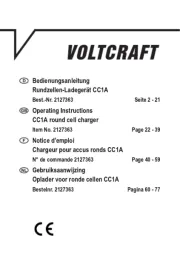
4 September 2024

4 September 2024

7 Augustus 2024

7 Augustus 2024

7 Augustus 2024

7 Augustus 2024

7 Augustus 2024

11 December 2023
Handleiding Batterij-oplader
- Fluke
- Milwaukee
- Crestron
- Navitel
- Emtop
- Einhell
- Aluratek
- Monacor
- MSW
- Topcraft
- I-Tec
- BAAS
- IOttie
- Olight
- Mean Well
Nieuwste handleidingen voor Batterij-oplader
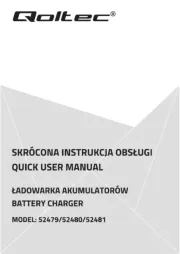
12 September 2025
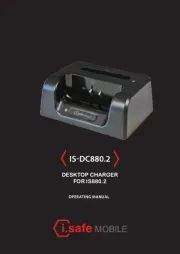
8 September 2025
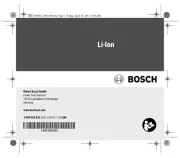
2 September 2025
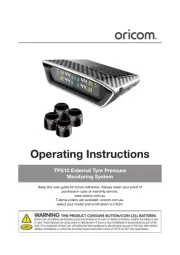
1 September 2025
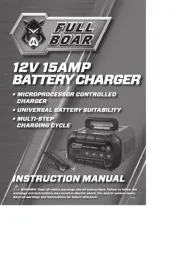
1 September 2025
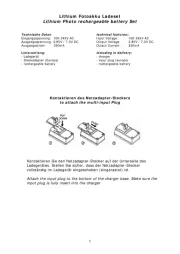
27 Augustus 2025
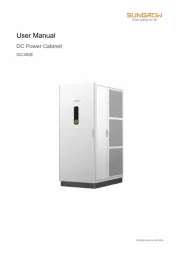
26 Augustus 2025
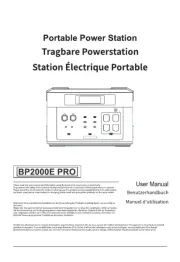
26 Augustus 2025
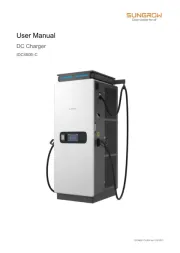
25 Augustus 2025
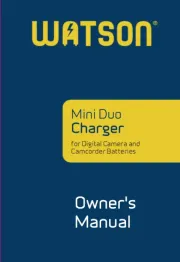
15 Augustus 2025